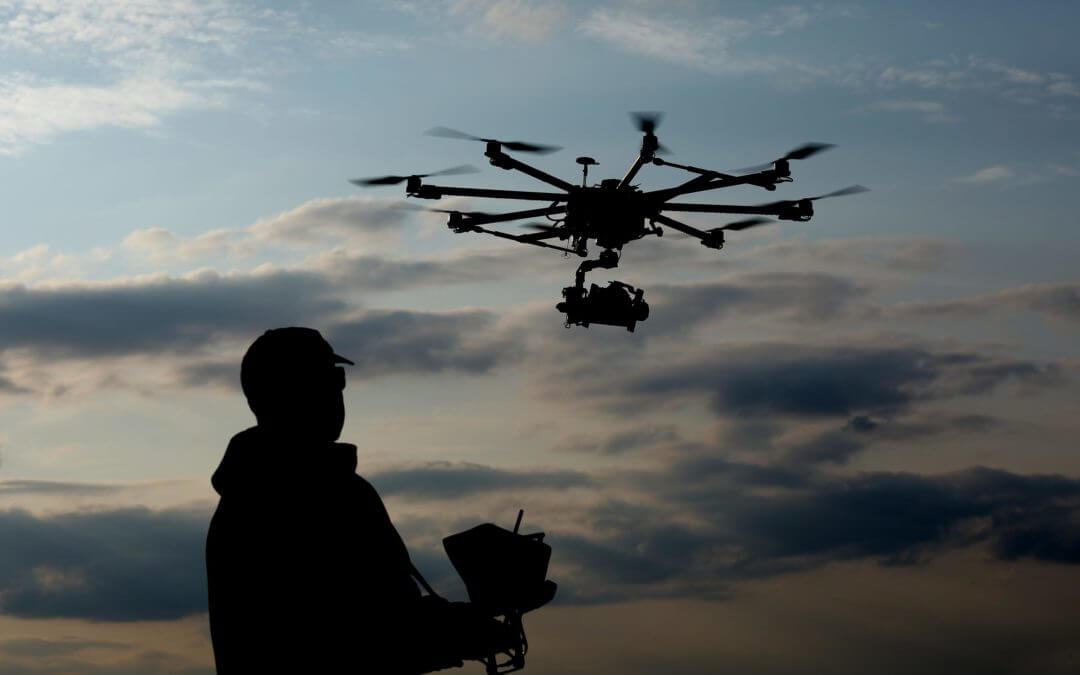Can you guess when an army used an unmanned air vehicle (UAV) for the first time?
The answer may surprise you – in July 1849 Austrian forces launched unmanned balloons from land and sea as part of a strategic mission.
The military has come a long way from using balloon UAVs. Today they employ the most sophisticated drone technology to accomplish everything from object tracking to combat search and rescue, and the army, in particular, uses drones to accomplish a variety of tasks.
Although armies have used UAVs in one form or another for over a century, widespread army drone use has increased over the last 20 years.
Learn some of the lesser-known ways the army uses drones?
1. Signal intelligence
Gathering valuable data about objects and people is a necessity for military forces. An army has to protect itself from all kinds of threats on the ground and in the sky and must maintain situational awareness at all times.
For decades, the US army has used signal intelligence and radar imagery to gather valuable data. The army routinely uses drones equipped with powerful infrared sensors, light and imaging detection, and RADAR to scope out key areas and to amass valuable information.
Real-Life Application: Many armies use drones with signal intelligence sensors. These drones can tell how many radios are being used in a given area, where the radios are located, and, in some cases, what is being relayed over the radios.
2. Imagery intelligence
They say that knowledge is power – and real-time images are one of the greatest ways to acquire knowledge about a person, place, or object.
Drone data often starts out as an assortment of images collected during a surveillance mission. From there, the images are analysed, refined, and catalogued so that armies can draw valuable conclusions from the data.
The safety and preparedness of an army depends heavily on these images being accurate. Armies use drones to gather images near military bases and in remote areas that are hard to surveil by other means.
Real-Life Application: The US army has ordered several new high-powered drones with enhanced image capabilities. The Black Hornet 3 drones are lightweight, fast, and carry some of the most sophisticated cameras ever made.
3. Object tracking
Like signal and image intelligence, tracking objects is another core need that armies address through drone use.
Collectively, there are billions of objects in the sky, on land, and at sea at any given time – and in a danger zone, it’s hard to tell a safe, mundane object apart from a threat.
Armies use drones to track objects in a variety of settings and conditions. Drones equipped with sensors and recognition technology can lock onto an object and follow it without colliding into obstacles or getting off track.
Drones can also track people which is useful for spotting enemies and finding wounded or lost soldiers.
Real-Life Application: The US army conducts tracking training in New Mexico by using drones to follow vehicles.
4. Combat search and rescue
During chaotic conditions, soldiers occasionally go missing, get separated from their units, or become lost in unfamiliar territory. When anyone goes missing, time is of the essence, but soldiers are especially vulnerable – enemy forces actively work to capture prisoners of war.
Personnel Recovery Combat Search and Rescue (CSAR) missions are a core focus for the US military and other militaries worldwide have similar programs. During a rescue mission, drones are quickly and stealthily deployed to search for missing soldiers behind enemy lines.
Drones used for these missions can fly over 90 km/hr and are equipped with heat cameras and imaging tools that allow them to look beneath collapsed buildings and inside shelters. They can take off in seconds and are highly capable of finding at-risk soldiers.
Real-Life Application: In May 2019, the US Department of Defence made a public appeal for the development of a drone that is specialised for combat search and rescue.
5. Data relay
Armies use all kinds of tactics for sending messages back and forth. Some methods are common, like radios, while others are more intriguing, like spies.
Drones are one of the best tools for conveying messages since they can support all kinds of sensors and cameras. Drones also have sophisticated ways of handling obstacles that can impede communication.
Real-Life Application: Boeing’s ScanEagle drone has successfully relayed messages from points that were nearly 30 km apart.
Every year, armies are finding innovative new ways to use drones. If you need help determining requirements for your drone program, get in touch with Mirragin today at admin@mirragin.com.au.
Find out more about drones and their future in business, subscribe to our podcast.

